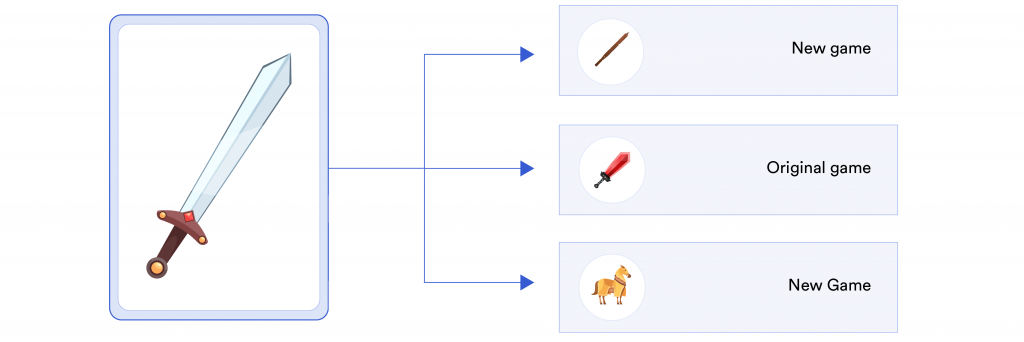Blockchain games part 1: interoperability

This guest column is the first in a series about the future promise of blockchain games from metaverse technology company MetaGravity.
Blockchain gaming – a fusion of traditional gaming experiences with decentralised ledger technology – will revolutionise the way players interact with their in-game assets.
Through non-fungible tokens (NFTs), players can now truly own, trade and monetize their virtual possessions – both within and outside their respective gaming ecosystems.
Blockchain gaming’s initial ride since 2017 has been largely characterised by play-to-earn “GameFi”. These are essentially browser-based games built on top of smart contracts. Their exponential rise has been driven by strong community growth on social platforms such as Discord and Telegram. Examples of these types of projects include Chain Guardians and Axie Infinity.
However blockchain gaming is now evolving quickly with the development of more advanced projects focused on better gameplay experiences which are aiming to provide three core mechanisms: digital ownership, self-custody of in-game assets and true player-controlled economies to achieve a more immersive and persistent gaming experience.
Future promise
The allure of blockchain gaming lies in its promise of true digital ownership. Players can have full autonomy over their assets and accounts, a feature previously unattainable in traditional gaming.
This isn’t only about ownership – blockchains also serve as the foundational layer for vast in-game economies. And the potential doesn’t stop there. The ability to own your digital assets comes down to the fact that you control the private keys to access them. This brings self-custody into a new paradigm in terms of gaming as it enables player-controlled economies rather than economies dictated and owned by the game producers.
One of the most debated prospects is the interoperability of assets between game ecosystems. We often imagine a world where a weapon or character acquired in one game could be utilised or traded in another. This seamless transition of assets is thought to be able to redefine our understanding of in-game economies and player territories.

However, there are currently still a lot of question marks surrounding the commercial viability of these technologies as to how game studios stand to benefit from moving a privately-owned asset to another gaming ecosystem.
But with game studios spending millions of dollars on AAA game titles, why would they want to allow anyone else to be able to insert their assets into their ecosystem? Studios won’t create high-quality assets for free and importing other assets into their game may affect the overall design style or even worse, be of lower quality or fidelity. It would essentially be a transfer of value between your ecosystem and someone else’s, which isn’t very desirable if the goal is to turn a profit.
Today, there are not yet many use-cases for interoperable assets between gaming ecosystems. Porsche’s NFTs have the ability to be imported into GTA 6 for example, but as it stands there isn’t enough automation in game development for this to be widely adopted.
Game assets today are strongly coupled to the game builds and executables, and even if we wanted the assets within one game – say GTA 6 – to work in another – say CyberPunk 2077 – the only route to this would require the CyberPunk 2077 developers to write code and release a update patch to make this work. And repeat this forevermore for every set of game assets they would like to have compatibility with (and vice versa). This is an n^2 problem i.e. quadratic, and therefore completely unrealistic and intractable as a solution, unless there is a dramatic change to how games technology works at the engine level.
And while interoperability remains a largely unsolved problem, the tokenisation of assets is helping developers, players, influencers and investors align their interests in sharing value and collaborating based on the rules of economic game theory. As of today, it’s clear that we are not there yet – but the potential of these technologies enables us to consider a new way of operating and collaborating amongst game producers.
Interestingly in March 2023, Sony Interactive Entertainment published an intellectual property patent with the World Intellectual Property Organization for an NFT Framework for Transferring and Using Digital Assets between Game Platforms – so it’s clearly on their agenda, despite not yet acting on it.
